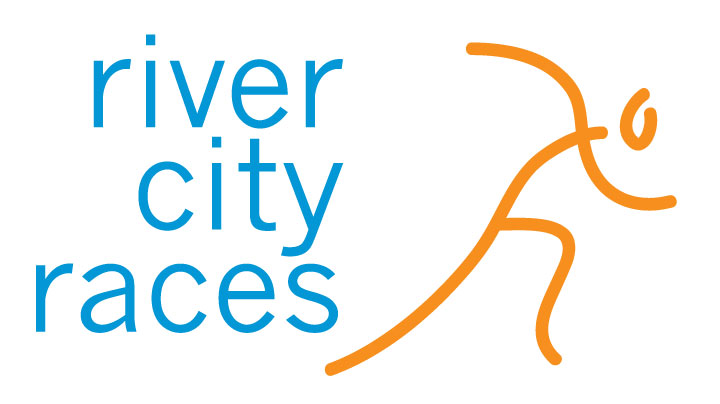The First Kentucky Derby Festival Mini-Marathon …. Fred Geswein
In the early 1970”s road racing for the general public referred to fast muscle cars, not people chasing through Iroquois Park on a beautiful Monday morning on April 24, 1974 in the first Kentucky Derby Festival Mini-Marathon, the Derby Mini.
At the time road racing consisted of a handful of former college runners and an elite (Olympic class) group. The later convened for well-known events in places like Boston and California. The remainder, what few we were, gathered for loosely organized events of varying distances. There were no, or minimal, entry fees. The awards were equally few. T-shirts “may” be awarded to the first three finishers or so. There was NOTHING just for finishing and less for entering. Courses and mile markers were nearly accurate. Competition in a “big” race (25-30) was fierce. Our numbers were few, but the comraderie was awesome.
Frank Shorter’s gold medal in the ’72 Olympic Marathon ignited an inexpensive fad with health benefits. Everybody could run. A full marathon was ( still is) too much for the average runner, but half of that distance, a “mini-“ version, was doable. Soon organized road races were becoming popular. Louisville Mayor Harvey Sloan was a runner, and soon the odd couple of Gil Clark and Ken Combs, were empowered to develop what would become the Derby Mini. What a pair they were. The rotund Clark, a baseball man, whose physique avoided fitness, was the head of the Parks Department. The slender Combs, an accomplished college runner at Bellarmine, and was one of the best local high school coaches ever. The soft-spoken Combs would eventually open the specialty running shoe store that bears his name. Ironically, it would be the equally personable Clark and his pith helmet that would become the face of distance running in Louisville.
Phil Fowler, one of a handful of locals still running after his career at Iroquois HS, had mentioned to me the possibility of an “organized” race of some sort as part of the Derby festivities. But, with or without social media, rumors abounded.
It was more than a bit surprising for race organizers and the handful of us “hard core” runners when over 300 people, most of whom had never run any race, showed up for the first Derby Mini. While the more experienced runners had nylon attire and a pair of running shoes. (No swooshes in 1974.) Most participants were clad in all cotton and tennis shoes. Port-a-Potties were not invented yet. The tradition of enjoying the greenery in Iroquois Park became a pre-race tradition.
Twice around Iroquois Park separated the field before we headed out to the frontage road that runs parallel with Southern Parkway. It was difficult to get an accurate split times using the sweep hand on your wind-up wristwatch. (No digital watches. No GPS.) But since the mile markers, if there were any, were less than accurate, it didn’t make any difference. Aid stations? Don’t remember any.
Once we made it to 3rd Street (9 miles) the course shifted to the sidewalks. Yep. Sidewalks.
As the fatigue level increased so did the distractions.
It was a little eerie going through the underpass at UL on the sidewalk as not only did we deal with sudden darkness, but there was the matter of trash, and the real possibility of running through someone’s living quarters. Dodging the citizenry was not only new to us, but to non-participants, who were justifiably surprised by these people literally racing past. What’s the hurry?
Intersections provided quite the challenge as there were no security guards that are mandatory today. We were at the mercy of stoplights and motorists, most of whom had stopped in awe of whatever was going on. Somehow we safely crossed the wider streets only to be greeted by the steps (after 13 miles?) going up to the finish line (where was it?) and the refreshing fountains on the Belvedere.
A hundred or so sweaty runners, including the mayor, splashed under the noon sun. Post-race refreshments were non-existent, or if they were, avoided me.
As a top ten finisher (7th) I received a very nice silver-plated mint julep cup, which still rests in my trophy case. I cannot remember an award ceremony as such. I did not know my time (1.15.06) nor see printed results of the race until I was writing this article 50 years later. And for each of us there was the issue that many were to face in the future: how to get back to our car at Iroquois Park.
I ran the first three Minis. Over the years I think I probably ran another three, but usually as a rabbit with a friend. Although I pretty much lost track of the event, to me, the day of the Mini was “Runners’ Day in Louisville.” After the race runners, many wearing the now-required tee shirt were everywhere! Post-race parties were abundant. For 2-3 years the Geswein house was a gathering site on the afternoon of the great race.
Although I fully comprehend and regretfully must agree with some of the changes made to the Mini in the last ten years or so, once the event moved downtown, it became just another event for me. The full marathon was always a mere distraction.
The First Kentucky Derby Festival Mini-Marathon was one of the highlights of my running career because it marked the re-birth of distance running in the Louisville area. Many races would be born, survive, and ultimately pass into history. But at age 50 the Kentucky Derby Festival Mini-Marathon lives on.
I have been fortunate to have been part of all it. For that I am grateful.







